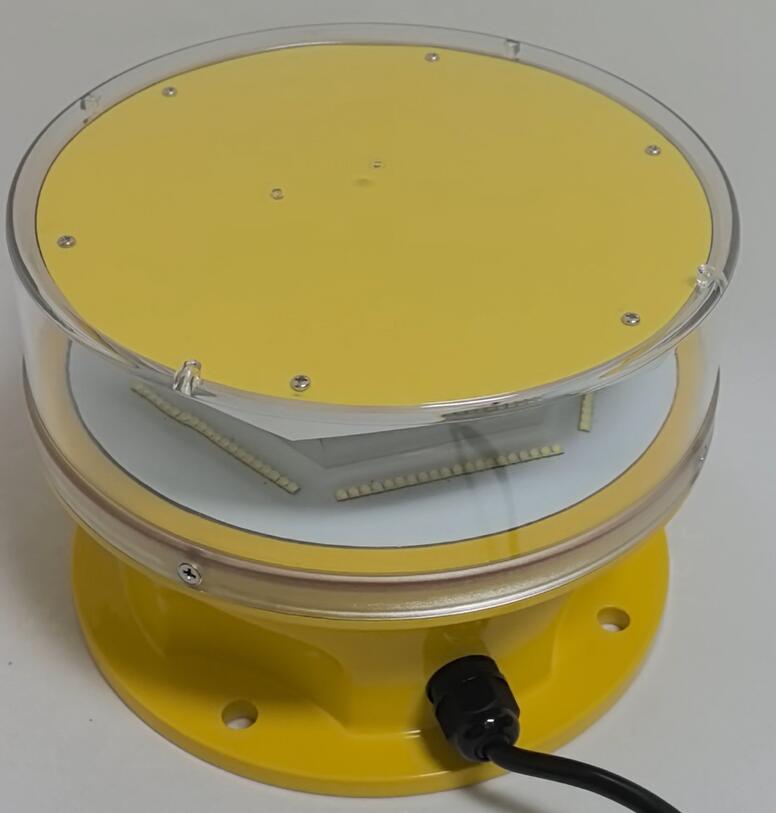Obstruction lights in aviation are a critical component of air navigation safety, ensuring that tall structures such as towers, buildings, and wind turbines are visible to pilots, particularly during nighttime or low-visibility conditions. These lights serve as a warning mechanism, helping to prevent collisions between aircraft and obstacles, thereby safeguarding both human lives and valuable assets. This article delves into the importance, functionality, and advancements of obstruction lights aviation, highlighting their indispensable role in modern airspace management.
The Purpose of Obstruction Lights in Aviation
The primary purpose of obstruction lights is to make tall structures visible to pilots, especially in conditions where visibility is compromised. These lights are typically installed on structures that exceed certain height thresholds, as defined by aviation regulatory bodies such as the Federal Aviation Administration (FAA) in the United States or the International Civil Aviation Organization (ICAO) globally. By marking these obstacles, obstruction lights help pilots navigate safely, reducing the risk of accidents.
Obstruction lights are particularly crucial in areas with high air traffic density, such as near airports or in urban environments with numerous skyscrapers. They are also essential for structures located in remote areas, where natural terrain might not provide sufficient visual cues for pilots. Without these lights, tall structures could pose a significant hazard, especially during takeoff, landing, or low-altitude flight operations.

Types of Obstruction Lights
There are several types of obstruction lights, each designed for specific applications and visibility requirements. The most common types include:
Red Obstacle Lights: These lights are used primarily at night and during periods of low visibility. They emit a steady or flashing red light, which is easily distinguishable against the dark sky. Red lights are often installed on structures that are less than 200 feet tall.
| Obstruction lights aviation |
White Strobe Lights: White strobe lights are used during the day and at twilight. They produce high-intensity flashes of white light, making them highly visible even in bright conditions. These lights are typically installed on taller structures, such as communication towers or wind turbines.
Dual Lighting Systems: Some structures use a combination of red and white lights to ensure visibility in all conditions. For example, red lights might be used at night, while white strobe lights are activated during the day.
Medium-Intensity Lights: These lights are used on structures of intermediate height and can be either red or white. They are designed to provide sufficient visibility without causing excessive light pollution.
| Obstruction light aviation |
Regulatory Standards for Obstruction Lights
The installation and operation of obstruction lights are governed by strict regulatory standards to ensure consistency and effectiveness. In the United States, the FAA mandates specific requirements for the color, intensity, and placement of obstruction lights based on the height and location of the structure. For instance, structures taller than 200 feet must be equipped with high-intensity white strobe lights, while shorter structures may use medium-intensity red lights.
Internationally, the ICAO provides guidelines that are adopted by many countries, ensuring a standardized approach to aviation safety. These regulations are periodically updated to reflect advancements in technology and changes in air traffic patterns. Compliance with these standards is mandatory, and failure to adhere to them can result in penalties or restrictions on airspace usage.
Technological Advancements in Obstruction Lights
Over the years, technological advancements have significantly improved the performance and reliability of obstruction lights. Traditional incandescent bulbs have largely been replaced by LED lights, which offer several advantages. LEDs are more energy-efficient, have a longer lifespan, and provide brighter and more consistent illumination. Additionally, modern obstruction lights are often equipped with solar panels and backup batteries, ensuring continuous operation even during power outages.
Another notable innovation is the integration of smart technology into obstruction lights. Some systems now feature remote monitoring capabilities, allowing operators to check the status of the lights in real-time. This not only enhances safety but also reduces maintenance costs by enabling proactive repairs and replacements. Furthermore, advancements in materials and coatings have improved the durability of obstruction lights, making them more resistant to harsh weather conditions.
Environmental and Community Considerations
While obstruction lights are essential for aviation safety, they can sometimes be a source of concern for communities located near tall structures. The bright, flashing lights can be intrusive, especially at night, leading to complaints from residents. To address this issue, manufacturers have developed lights with adjustable intensity or directional beams that minimize light pollution.
In addition, efforts have been made to design obstruction lights that blend more seamlessly with their surroundings. For example, some lights are now available in colors that match the structure they are mounted on, reducing their visual impact during the day without compromising their effectiveness at night. These innovations help balance the need for aviation safety with the desire to minimize environmental and community impact.
The Future of Obstruction Lights in Aviation
As air traffic continues to grow and urban areas expand, the demand for effective obstruction lights will only increase. Future developments in this field are likely to focus on further enhancing the efficiency and sustainability of these systems. For instance, researchers are exploring the use of advanced materials and coatings that can improve the visibility of structures without the need for additional lighting.
Moreover, the integration of obstruction lights with other aviation safety technologies, such as radar and GPS systems, could provide an additional layer of protection. By creating a more interconnected safety network, these advancements have the potential to significantly reduce the risk of collisions and improve overall aviation safety.
Obstruction lights aviation play a vital role in ensuring the safety of air navigation by making tall structures visible to pilots, particularly in low-visibility conditions. Through strict regulatory standards, technological advancements, and ongoing innovation, these lights continue to evolve, offering greater efficiency and reduced environmental impact. As the aviation industry grows, the importance of obstruction lights will remain paramount, safeguarding the skies for generations to come.